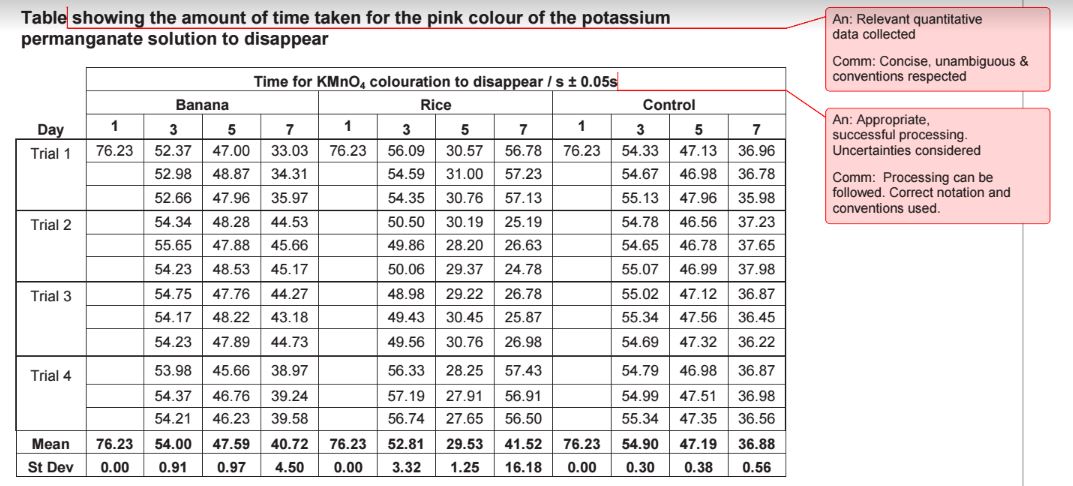Data Tables
Presenting data in an effective way is an important skill of all scientists. A data table is used to present information in a succinct way. In building a data table you must balance the necessity that the table be complete with the equally important necessity that it not be too complex. Sometimes it is helpful to break a large table into several smaller ones to allow the reader to identify important information easily, but, conversely, it is a common mistake of students to split up into several tables data that belong in one table. Here is some feedback I've given about data tables for the Internal Assessment in addition to some general table formatting guidelines:
- Title the table; make sure the title relates to the data you will put in your table. The data table title is NOT a repeat of the research question; the title SHOULD be descriptive of the data contained in the table.
- Figure out how many columns and rows are needed. Rows are a series of horizontal cells and columns are a series of vertical cells. Although not required, in most cases the manipulated variable (that which is purposefully changed) is in the left column, the raw data for the responding variable (that which you measure) with the different trials is in the next columns, and the processed data (often average and standard deviation) is in the far right column. Be sure to include a row for the heading of each column.
- Draw the table either by hand or within a software program like Microsoft Excel or Google Sheets. Show lines around all rows and columns. Be sure the table does not break across multiple pages.
- Label the columns, including units and measurement uncertainty of the raw data.
- Record the data from the experiment or research in the appropriate columns. The information in the table must be clear and obvious to anyone who sees it. When you're finished there should be a number in every space. All numerical values must have the consistent and correct number of digits. There should be no variation in the precision of the data; the same number of decimal places (significant digits) should be used.
- Check your table. Look over the work to make sure everything is correct and clear.
Annotated Samples (from the IBO)


